Birds, with their kaleidoscope of colors and symphonies of sound, often steal the show with dance moves that could easily make them viral TikTok sensations. Whether they’re shimmying to attract a mate or grooving to mark their territory, their dance routines could mesmerize you long enough to forget your own TikTok feed.
1. Western Grebe
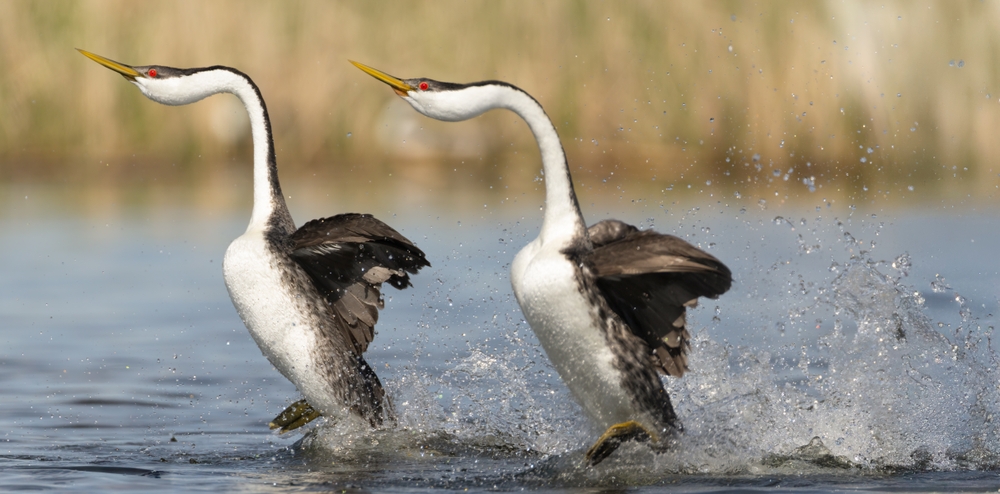
When Western Grebes perform their courtship dance, you might wonder if they moonlight as synchronized swimmers. These water birds impress with a display known as “rushing,” where they sprint across the water’s surface, necks arched gracefully. It’s a delicate blend of speed and poise, reminiscent of ice dance but with more splashing. The coordinated timing between the pair is so precise, you’d think they shared a telepathic link.
According to ornithological research from the Cornell Lab of Ornithology, these displays are crucial for pair bonding, emphasizing skill and coordination. The dance isn’t just flamboyance; it’s a testament to their compatibility and future teamwork in raising chicks. Watching these performances, you see more than just a dance; you witness a life partnership forming right before your eyes. It’s a vivid reminder of how nature pairs spectacle with purpose.
2. Red-capped Manakin
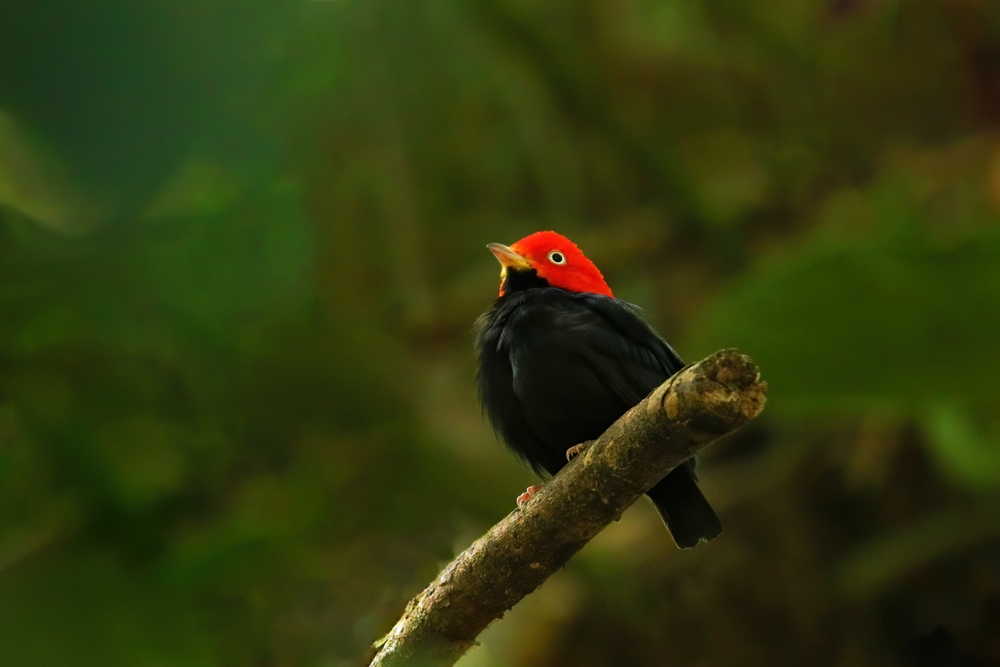
The Red-capped Manakin’s dance is all about flair and speed. Found in the forests of Central America, this small bird moonwalks along branches with a surprising agility that would leave even Michael Jackson in awe. Its red cap and bold black feathers only add to the theatricality, making it a vibrant spectacle against the green foliage. This boogie is more than just a show; it’s a key strategy in attracting a mate.
This bird’s performance is a true testament to the saying that the best dancers are born, not made. You can almost imagine the female manakins critiquing form and technique like seasoned dance judges. For the male, every slide and step is a way to measure up against rivals and win the favor of a discerning partner. In this jungle, the dance floor is a branch, and the stakes are the continuation of the species.
3. Superb Bird-of-Paradise

The Superb Bird-of-Paradise takes dramatic flair to another level. Nestled in the rainforests of New Guinea, this bird transforms its appearance with an elaborate fan of feathers that make it look like a celestial cloak. The male’s courtship display includes rhythmic bobbing and a series of calls that could rival a pop concert. It’s an intricate show meant to captivate the discerning eye of a female counterpart.
According to studies from the Smithsonian National Museum of Natural History, these displays are not just about aesthetics. The complexity and energy of the dance also act as indicators of the male’s fitness and genetic quality. It’s a vivid demonstration of how evolution shapes behavior in the most eye-catching ways. If you witnessed this performance, you’d see why the forest floor becomes their stage, and every movement is a testament to generations of adaptation.
4. Blue-footed Booby

The Blue-footed Booby’s dance is as playful as its name suggests. Known for their vibrant azure feet, these seabirds use their colorful limbs as the centerpiece of their courtship ritual. Their mating dance involves exaggerated, high-stepping movements that highlight those striking feet, complemented by head nods and skyward pointing. The vibrancy of their feet signals fitness and health, making the dance both a display of prowess and a test of virility.
Here, it’s all about how well you can strut your stuff. You can’t help but be charmed by the earnestness of their performance, as they work tirelessly to impress potential mates. It’s as if each step is choreographed with the intention of outshining competitors and winning the heart of a discerning onlooker. These performances are reminders that, in the animal kingdom, confidence and a dash of color can go a long way.
5. Lyrebird
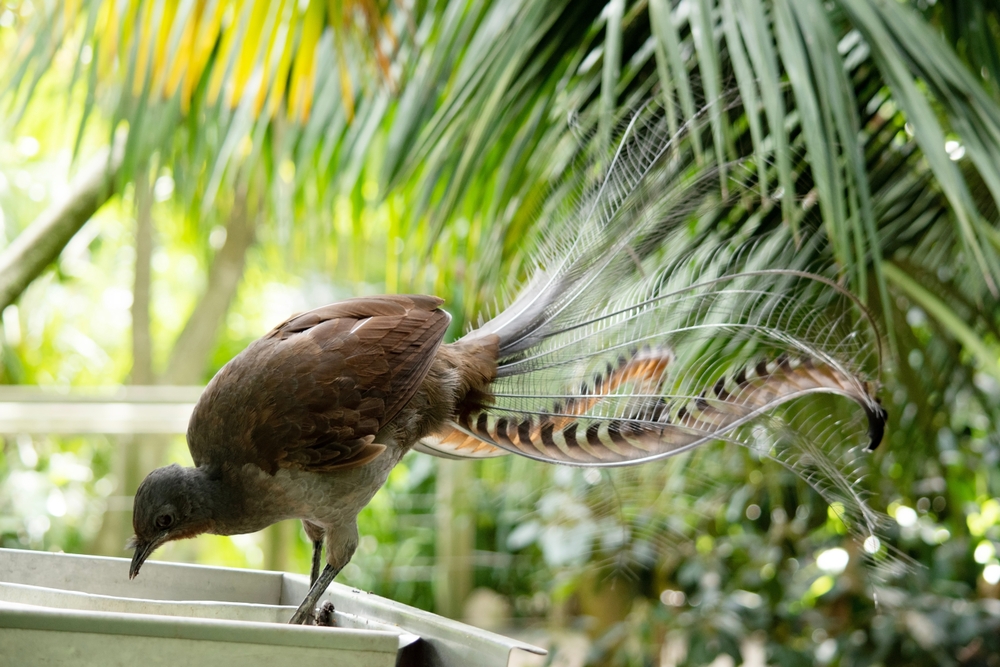
The Lyrebird is a virtuoso of mimicry, but its dance is just as enthralling as its vocal prowess. Found in Australia, this bird’s tail feathers mimic the shape of a classical lyre, and its dance perfectly complements this visual spectacle. The male lyrebird spreads his feathers in a fan, creating an enchanting visual display as he prances around with intricate footwork. This performance is often accompanied by an impressive soundtrack that replicates the sounds of their environment.
According to research by the Australian National Wildlife Collection, these birds can mimic not only natural sounds but also human-made noises, integrating them into their courtship display. This multifaceted performance is a showcase of talent and adaptability, demonstrating an evolutionary edge in attracting mates. Witnessing a lyrebird’s dance feels like attending a multisensory concert that leaves you in awe of nature’s ingenuity. It’s a reminder that sometimes, the best shows are free and found right in the wild.
6. Sharp-tailed Grouse
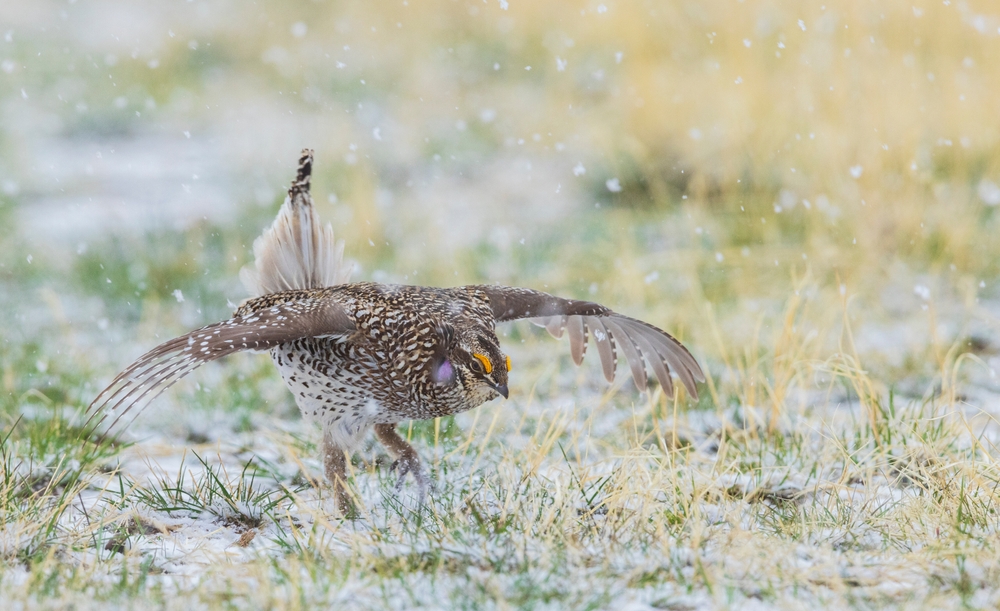
The Sharp-tailed Grouse brings a rustic charm to the dancing arena. Found in North America’s grasslands, these birds engage in a group dance known as a lek, where males gather and display for the attention of females. The dance involves stomping, clapping their wings, and making cooing noises — a bustling, lively display that’s as communal as it is competitive. Watching them, you almost feel like you’ve stumbled upon nature’s very own dance-off.
These gatherings are a spectacle, with each male trying to outperform his peers. There’s something endearing about their earnestness, each bird giving his all under the open sky. The lek is not just about individual flair, but about being part of a vibrant tradition that signals the coming of spring. It’s a unique experience that highlights both competition and camaraderie in the natural world.
7. Peacock
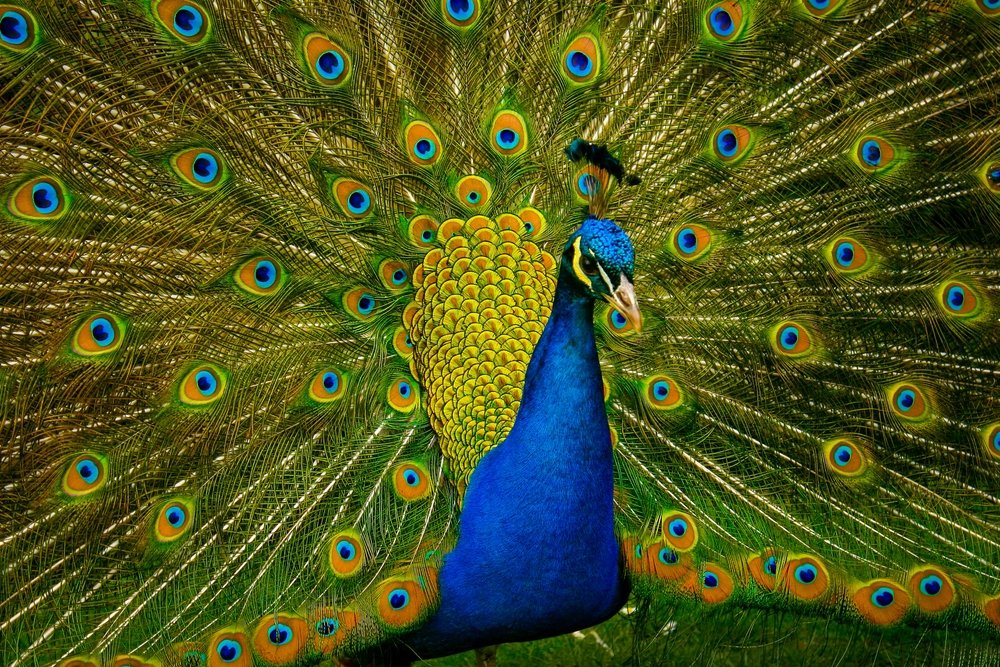
When it comes to iconic avian dancers, the Peacock reigns supreme. Its courtship display is a breathtaking visual feast, with males unfurling their iridescent tail feathers into a shimmering fan. This performance isn’t just about beauty; it’s a complex interplay of color, movement, and sound designed to captivate a mate. The peacock struts and shimmies, creating a rustling sound that adds an auditory dimension to the visual spectacle.
Research from the University of Tokyo suggests that the vibrations and sounds produced during these displays play a significant role in attracting females, adding another layer to this intricate courtship ritual. The display is a vivid reminder of how evolution crafts exuberant displays to ensure survival and reproduction. Every flutter of a feather is a calculated move in a dance as ancient as the species itself, where every nuance matters in the quest for a mate.
8. Greater Sage-Grouse
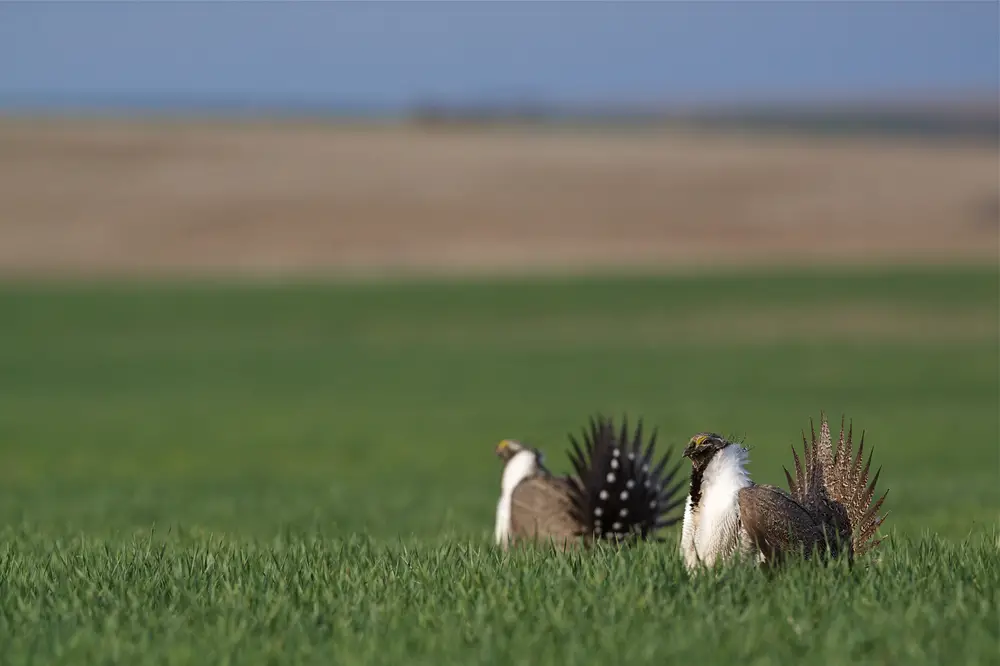
The Greater Sage-Grouse may not have the flashy colors of some other avian dancers, but its performance is no less captivating. Found in the sagebrush ecosystems of North America, these birds engage in a courtship display that combines inflating air sacs and distinct popping sounds. The males fan their spiky tail feathers and strut with a rhythmic precision that demands attention. This dance is all about presence, as each bird tries to assert dominance and allure potential mates.
While watching, you sense the stakes are high, with each grouse trying to outdo the other in this grand performance. It’s an evocative scene, reminiscent of a ballroom filled with hopeful suitors vying for attention. The communal nature of the lek creates a vibrant atmosphere, filled with anticipation and competitive spirit. This dance is a testament to the power of persistence and presentation in the natural world.
9. Andean Cock-of-the-rock
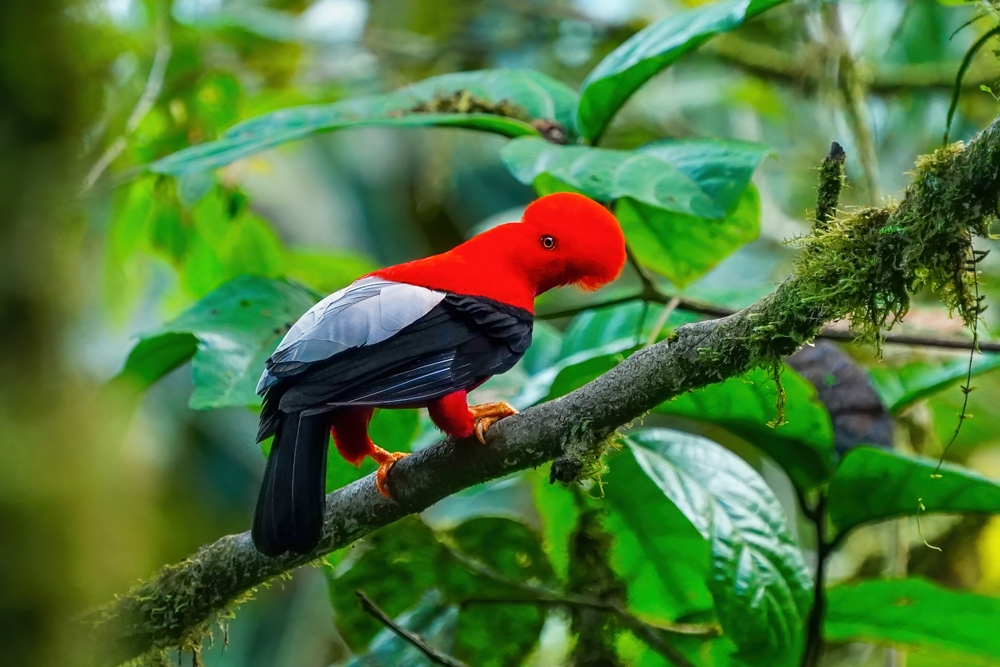
The Andean Cock-of-the-rock is as flamboyant as its name suggests. Found in the cloud forests of the Andes, these vibrant orange birds perform a riveting dance to win over females. The males gather in leks, showcasing a mix of wing flaps, hops, and vocalizations that resonate through the forest. Their outrageous displays highlight their vivid plumage and exuberant personality, making it a must-see spectacle for bird enthusiasts.
You can’t help but admire the confidence and energy they bring to the dance floor. Each performance is a dazzling display of nature’s paintbrush, with colors that seem to defy the muted backdrop of their habitat. Their courtship dance emphasizes the importance of standing out in a world where blending in often means survival. This is one show where brightness and boldness take center stage, captivating both partners and spectators alike.
10. Victoria’s Riflebird
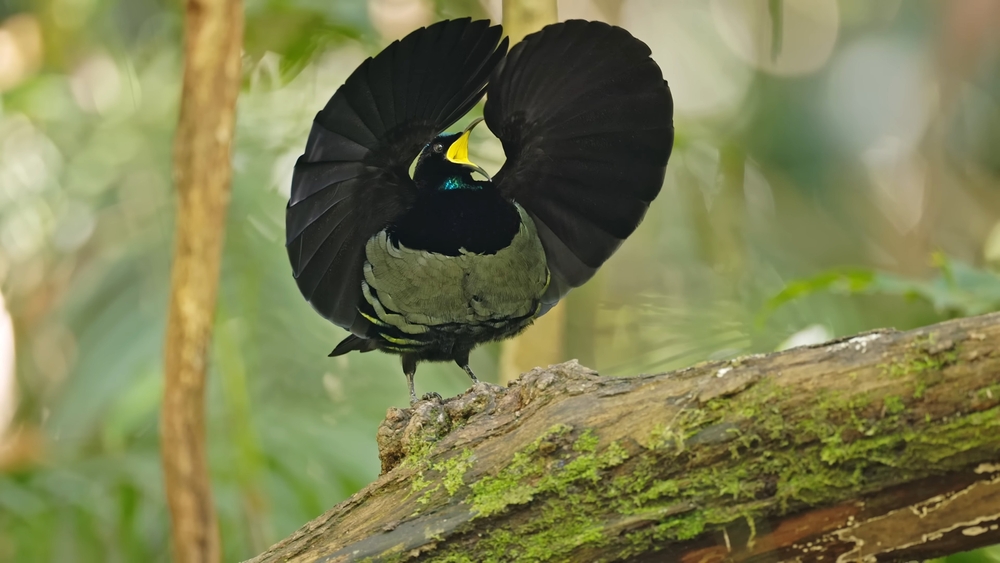
Victoria’s Riflebird, native to the rainforests of Australia, is a master of the avian moonwalk. The male’s courtship display involves spreading his wings to reveal a shimmering blue-green plumage, accompanied by a series of intricate dance moves. His repertoire includes fluttering, sidesteps, and even a bit of mimicry, all performed with an elegance that speaks to centuries of evolutionary refinement. Watching this, you get the sense that every movement is calculated to impress and enthrall.
The dance of the riflebird is a testament to the power of subtlety and grace over sheer spectacle. There’s an intelligence in each movement, a choreography that seems to tell a story without words. For the onlooking female, it’s an opportunity to evaluate potential mates based on skill and dedication. For human observers, it’s a reminder of the beauty and complexity inherent in the natural world.
11. Lesser Flamingo
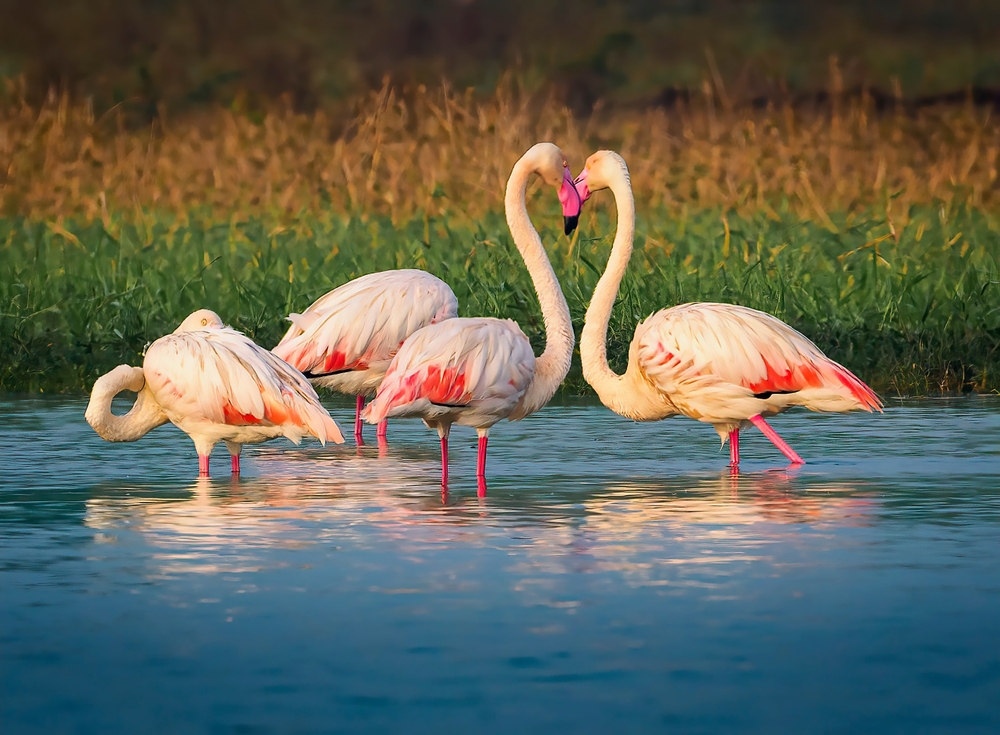
The Lesser Flamingo’s courtship display is a vibrant, synchronized ballet. Found in Africa and India, these birds engage in group dances that are as much about unity as they are about competition. They bob their heads and march in unison, their pink plumage creating a sea of color that can be seen from afar. The dance is a social affair, with the community coming together in an impressive display of coordination.
The flamingos’ performance highlights the importance of teamwork, even in matters of romance. Their synchronized movements suggest a harmonious society where cooperation is key to attracting a mate. It’s a spectacle of both beauty and strategy, where being part of the group enhances individual chances of success. Watching these birds, you realize that sometimes the best performances are those carried out together, each participant adding to the collective impact.
12. Satin Bowerbird

The Satin Bowerbird is a testament to the artistry involved in avian courtship. Found in Australia, the male builds an elaborate bower—a structure of twigs and leaves—decorated with blue objects to attract females. The dance involves a series of postures and calls performed in or around the bower, showcasing both the bird’s construction skills and his ability to entertain. This performance is a blend of creativity and showmanship, designed to win over a discerning mate.
In this courtship ritual, it’s clear that presentation matters as much as the dance itself. The bower becomes a stage, and the performance is as much about the environment as it is about the actor. It’s a unique blend of architecture and art, where the dance is only part of the courtship equation. Observing this, you appreciate the multifaceted approach these birds take in attracting a partner, combining aesthetics with athleticism.
13. Kori Bustard

The Kori Bustard may not seem like a natural dancer, but its display is surprisingly graceful. Native to the African savanna, this large bird engages in a courtship dance that involves inflating its throat sac and raising its tail feathers. The male struts and puffs with an impressive presence, turning the ordinary grasslands into a stage for his performance. It’s a showcase of strength and endurance, where size and display matter as much as finesse.
Despite its cumbersome appearance, the Kori Bustard’s dance is a reminder that grace can be found in the most unexpected places. You can’t help but admire the effort and dedication that goes into each display, a testament to the bird’s commitment to finding a mate. This dance is a vivid illustration of how appearances can be deceiving, with the seemingly awkward transformed into the extraordinary. It’s a celebration of the unexpected elegance that nature often hides in plain sight.
